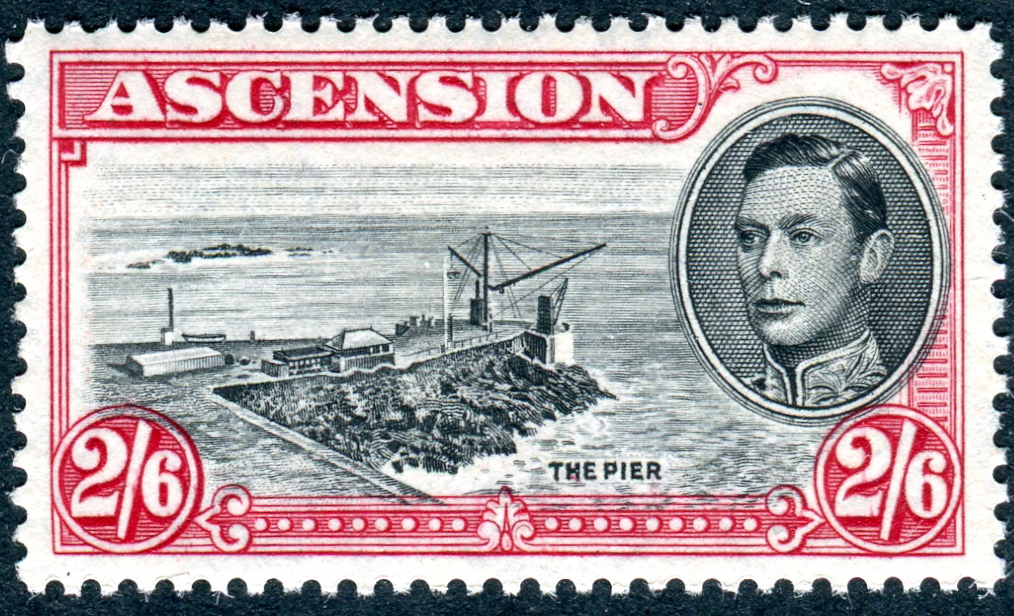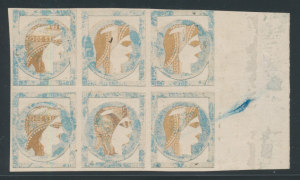 Book readers sort into two main groups: the first looks at each volume as a challenge to be surmounted. Starting on page one, this group reads page by page until they are done, stopping for other activities but only reading one book at a time. Other readers are more casual about reading, often reading many books simultaneously, alternating between fiction and non fiction as the mood hits and as time allows.
Book readers sort into two main groups: the first looks at each volume as a challenge to be surmounted. Starting on page one, this group reads page by page until they are done, stopping for other activities but only reading one book at a time. Other readers are more casual about reading, often reading many books simultaneously, alternating between fiction and non fiction as the mood hits and as time allows.
Stamps collectors too fall into these broad categories. Many are one one country or one specialty collectors and they spend significant time and money creating fine collections of their area. The rewards for this kind of collecting temperament is the sense of accomplishment that comes from devoting all your energies to one goal and attaining that goal to the best of your abilities. But the other model for collecting, where you have multiple areas of interest, and move back and forth depending
Blog
- Posted June 07, 2018Read more »
- Posted June 05, 2018Read more »
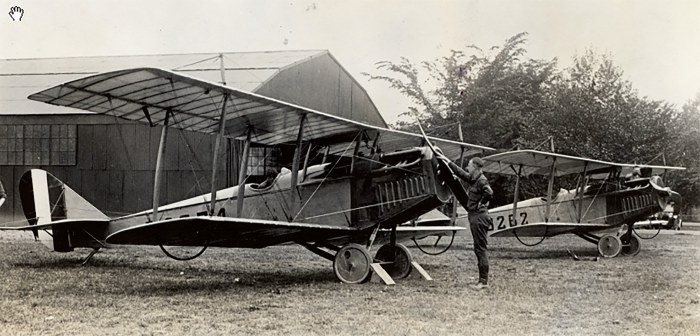 Aerophilately has been a popular philatelic specialty for nearly a hundred years now. No country has as many interesting Airmails as does France, and indeed the Airmails of France cover many of the more esoteric aspects of our hobby. The first two Airmails are overprints and show that aspect of stamp issuance; an earlier issue receives an additional print that changes its purpose and often the postage that it was originally sold for. The second issue of the Airmails of France are the famed Ile de France Airmails. These Airmails are provisionals issued for just one flight and not available through the general philatelic agency. Like many of the rarest early worldwide Airmails, they have a quasi-official character, and, had they not been placed in prominent collections at the early period that they were, they probably would not today enjoy major catalog number status.
Aerophilately has been a popular philatelic specialty for nearly a hundred years now. No country has as many interesting Airmails as does France, and indeed the Airmails of France cover many of the more esoteric aspects of our hobby. The first two Airmails are overprints and show that aspect of stamp issuance; an earlier issue receives an additional print that changes its purpose and often the postage that it was originally sold for. The second issue of the Airmails of France are the famed Ile de France Airmails. These Airmails are provisionals issued for just one flight and not available through the general philatelic agency. Like many of the rarest early worldwide Airmails, they have a quasi-official character, and, had they not been placed in prominent collections at the early period that they were, they probably would not today enjoy major catalog number status. - Posted June 04, 2018Read more »Philately has many collectibles. Stamps are obvious; covers are stamps on envelopes and are derivative from the stamps themselves. And Proofs and Essays are precursors, coming before (and sometimes instead of) the stamps that they are associated with. As all of these types of philatelic material are related to the official issuance and use of stamps, they have always been esteemed by collectors. But what about Printer's Waste?
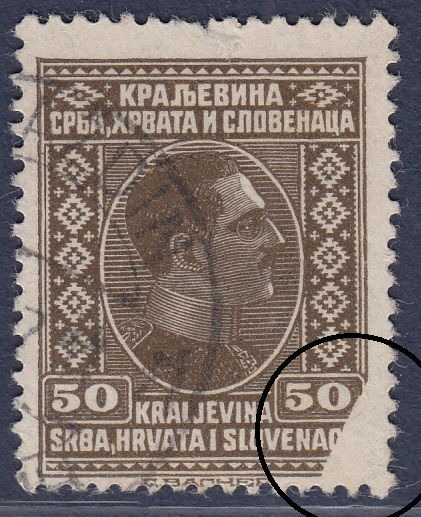 Printer’s Waste is a fairly amorphous term. Technically it means any printing related to postage stamps done by stamp printers that was
Printer’s Waste is a fairly amorphous term. Technically it means any printing related to postage stamps done by stamp printers that was - Posted May 31, 2018Read more »
 Philately has always been a cold weather hobby. Its popularity nation to nation and region to region has always increased south to north with the highest concentrations of serious collectors where it is the coldest and darkest. The reasons are clear- a warm cup of hot chocolate, a stamp album and some new additions to mount are a nice way to spend a cold a blustery winter's evening. There are other reasons too-paper doesn't keep so well in warm sticky climates and literacy and reading rates which are good predictors of philatelic interest are higher in northern countries. And we see collector rates getting higher and higher the further from the equator that we move. Philately has always been a major hobby in Scandinavia but even within countries the rate of stamp collecting increases as you move from the warmer parts of the country to the colder. In Germany, probably the most philatelically active nation, far more collectors live the Northern, colder part of the country than the Southern.
Philately has always been a cold weather hobby. Its popularity nation to nation and region to region has always increased south to north with the highest concentrations of serious collectors where it is the coldest and darkest. The reasons are clear- a warm cup of hot chocolate, a stamp album and some new additions to mount are a nice way to spend a cold a blustery winter's evening. There are other reasons too-paper doesn't keep so well in warm sticky climates and literacy and reading rates which are good predictors of philatelic interest are higher in northern countries. And we see collector rates getting higher and higher the further from the equator that we move. Philately has always been a major hobby in Scandinavia but even within countries the rate of stamp collecting increases as you move from the warmer parts of the country to the colder. In Germany, probably the most philatelically active nation, far more collectors live the Northern, colder part of the country than the Southern. - Posted May 29, 2018Read more »
 Many endeavors have disputes over who are the greats in the field. Baseball aficionados have argued for decades over the greatest players and teams. Complex statistical analyses have been devised that can be used to compare players from different generations to each other. Others statistics rate the comparative values to their teams of pitchers versus position players. Avid readers rate famous authors based not just on how much the reader likes the writing but on the writer's impact on literature. And similar evaluations exist in the field of arts criticism and music.Perhaps because philately is a discipline without an academic footing, little attempt has ever been made to compare the great collectors in the history of our hobby to determine the ones who
Many endeavors have disputes over who are the greats in the field. Baseball aficionados have argued for decades over the greatest players and teams. Complex statistical analyses have been devised that can be used to compare players from different generations to each other. Others statistics rate the comparative values to their teams of pitchers versus position players. Avid readers rate famous authors based not just on how much the reader likes the writing but on the writer's impact on literature. And similar evaluations exist in the field of arts criticism and music.Perhaps because philately is a discipline without an academic footing, little attempt has ever been made to compare the great collectors in the history of our hobby to determine the ones who - Posted May 29, 2018Read more »
 It is a love of stamps that takes the collecting impulse that is found in many of us and transforms the person into an ardent philatelist. The collector reads all he can about the hobby and, in the typical trajectory, goes from a more general type of collecting to specializing. The philatelic experience involves searching (dealers stocks, Ebay, the internet, philatelic auctions) in the hopes of finding items that are just right for your collection within the structure that you have used to define your collection, (US Fancy Cancels, German Pneumatic Post, or whatever).
It is a love of stamps that takes the collecting impulse that is found in many of us and transforms the person into an ardent philatelist. The collector reads all he can about the hobby and, in the typical trajectory, goes from a more general type of collecting to specializing. The philatelic experience involves searching (dealers stocks, Ebay, the internet, philatelic auctions) in the hopes of finding items that are just right for your collection within the structure that you have used to define your collection, (US Fancy Cancels, German Pneumatic Post, or whatever).
Counterintuitively, the very needs and skills that make collecting such a pleasurable experience tend to mitigate against turning your hobby into your profession. Collectors spend enjoyable hours searching for material that is just right for their collections. Dealers who duplicate that process for acquiring stock find that - Posted May 25, 2018Read more »
The fear of the counterfeiting of postage stamps made for a large number of Nineteenth Century printers' trade offs. The gold standard of anti-counterfeiting technology was line engraved (called intaglio) printing, which, for a special anti-forgery bonus, usually included lathe work. This type of printing rose off the paper and produced a fineness of design that didn't make
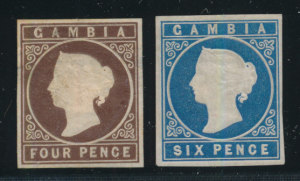 counterfeiting impossible but made it more difficult and raised the cost (both in time and expertise) to the forgers considerably. Producing line engraved stamps is similar to putting a burglar alarm sign on your front lawn or using the Club in your car. Raising the cost and risk to forgers or thieves means they look elsewhere to earn their
counterfeiting impossible but made it more difficult and raised the cost (both in time and expertise) to the forgers considerably. Producing line engraved stamps is similar to putting a burglar alarm sign on your front lawn or using the Club in your car. Raising the cost and risk to forgers or thieves means they look elsewhere to earn their - Posted May 24, 2018Read more »
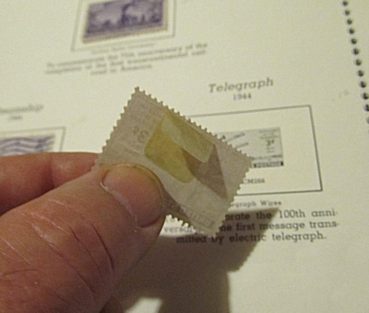 Until about 1950, philatelists were quite content hinging their stamps. The first stamp mounts in the United Stateswere Crystal Mounts, marketed by the H E Harris Company. They were not created because collectors wanted (or could be convinced they wanted, which is they same thing) a better way to mount their stamps. Rather Crystal Mounts were really a pain to use and were marketed solely to add a non-stamp item to the Harris line. Harris found he made more money from albums and mounts than he could from stamps. Crystal Mounts were clear acetate strips that collectors wrapped around their stamps and then cut the mounts to the desired size. Stamp mounts have always had two problems- the problem of height and the problem of horizontal and vertical.Harris's solution to the height problem was
Until about 1950, philatelists were quite content hinging their stamps. The first stamp mounts in the United Stateswere Crystal Mounts, marketed by the H E Harris Company. They were not created because collectors wanted (or could be convinced they wanted, which is they same thing) a better way to mount their stamps. Rather Crystal Mounts were really a pain to use and were marketed solely to add a non-stamp item to the Harris line. Harris found he made more money from albums and mounts than he could from stamps. Crystal Mounts were clear acetate strips that collectors wrapped around their stamps and then cut the mounts to the desired size. Stamp mounts have always had two problems- the problem of height and the problem of horizontal and vertical.Harris's solution to the height problem was - Posted May 22, 2018Read more »
 In the 1970’s and 1980’s the stamp business underwent a shift. The traditional stamp store began not to work very well as a philatelic sales model. At the time dealers thought this was because it didn't make sense to have a store front for which the vast majority of people who passed by had no interest, and rents in central locations had grown very high relative to sales. But looking back, what really ended the traditional stamp store was the rapid rise in stamp prices in the late 1970’s, and the consequent increase in philatelic liquidity. Better stamps became so easy to sell and in such demand that dealers flocked to stamp shows week after week to sell their purchases. Collectors soon followed to where the best selection of goods were offered, and by the time the market cooled in the early 1980’s, there was little desire to go back to the traditional stamp dealer sitting-on-his-wares and waiting-for-customers model that had prevailed in previous decades.
In the 1970’s and 1980’s the stamp business underwent a shift. The traditional stamp store began not to work very well as a philatelic sales model. At the time dealers thought this was because it didn't make sense to have a store front for which the vast majority of people who passed by had no interest, and rents in central locations had grown very high relative to sales. But looking back, what really ended the traditional stamp store was the rapid rise in stamp prices in the late 1970’s, and the consequent increase in philatelic liquidity. Better stamps became so easy to sell and in such demand that dealers flocked to stamp shows week after week to sell their purchases. Collectors soon followed to where the best selection of goods were offered, and by the time the market cooled in the early 1980’s, there was little desire to go back to the traditional stamp dealer sitting-on-his-wares and waiting-for-customers model that had prevailed in previous decades. - Posted May 22, 2018Read more »
 One of the worse views of humanity is summed up in Leo Durocher's famous line "Nice guys finish last". Durocher was a major league baseball shortstop and manager and its not clear what in his life led him to this philosophy. Durocher was famously not a nice guy. He was a drinker, passer of bad checks, womanizer and once said that if he was playing third base and his mother was rounding third base trying to score he would trip her. Its not clear at all that being so prickly helped Leo finish any better than being a bit kinder would have. He was a mediocre shortstop, never making the list of the top fifty who played the game, nor did he make the top ten list for managers, supposedly his greatest baseball strength. Durocher is proof that being a nasty only-for-me-person
One of the worse views of humanity is summed up in Leo Durocher's famous line "Nice guys finish last". Durocher was a major league baseball shortstop and manager and its not clear what in his life led him to this philosophy. Durocher was famously not a nice guy. He was a drinker, passer of bad checks, womanizer and once said that if he was playing third base and his mother was rounding third base trying to score he would trip her. Its not clear at all that being so prickly helped Leo finish any better than being a bit kinder would have. He was a mediocre shortstop, never making the list of the top fifty who played the game, nor did he make the top ten list for managers, supposedly his greatest baseball strength. Durocher is proof that being a nasty only-for-me-person - Posted May 18, 2018Read more »
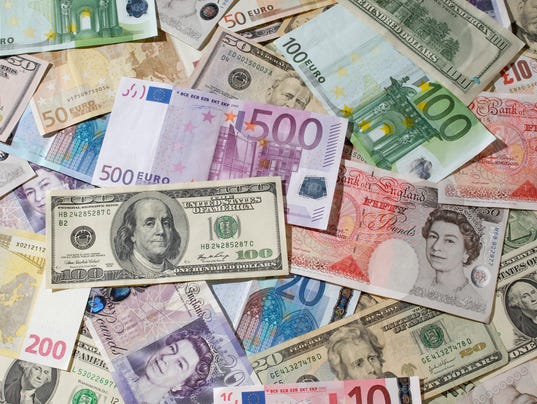 Until 1970 the stamp market in the United States was mostly determined by the domestic market alone. Virtually all stamps, both US and Foreign, that were sold in this country were sold to domestic buyers. International travel was unusual and expensive, there was no Internet, and American philatelic auctioneers didn't send many catalogs overseas. 1970 was a watershed year as it marked the period that the economic balance began to shift between Europe and the United States. Until 1970, Europe was still economically weak and recovering from the devastation of WW II. After 1970, the dollar was devalued several times against the mark and other European currencies, which pushed up prices of these stamps in dollar terms. And the rapidly expanding European economies gave consumers there more money to pursue their hobbies also putting upward pressure on prices. Large numbers of European dealers flocked to our shores and millions of dollars of European stamps flowed back to their countries of origin.
Until 1970 the stamp market in the United States was mostly determined by the domestic market alone. Virtually all stamps, both US and Foreign, that were sold in this country were sold to domestic buyers. International travel was unusual and expensive, there was no Internet, and American philatelic auctioneers didn't send many catalogs overseas. 1970 was a watershed year as it marked the period that the economic balance began to shift between Europe and the United States. Until 1970, Europe was still economically weak and recovering from the devastation of WW II. After 1970, the dollar was devalued several times against the mark and other European currencies, which pushed up prices of these stamps in dollar terms. And the rapidly expanding European economies gave consumers there more money to pursue their hobbies also putting upward pressure on prices. Large numbers of European dealers flocked to our shores and millions of dollars of European stamps flowed back to their countries of origin. - Posted May 17, 2018Read more »
 Traditionally, most collectors of United States stamps have collected in a similar fashion. They collected the stamps after 1930 mint and in Very Fine NH condition. From 1900-1930 they collected mint as well but usually were content with hinged stamps and often lesser centering as well. Nineteenth Century was largely collected used by the vast majority of collectors. Collectors who collected this way were responding to two realities of US philately. First, prices for perfect mint stamps are reasonable in the modern period when most of the stocks of stamps are in perfect condition. But as collectors reach the earlier periods, the premium for perfect quality and gum begins to rise to levels that most collectors can't afford. Rather than quit collecting they compromise on quality. And second, even if money were not a concern, the quantity of perfect stamps in the earlier periods is very small. Collectors are like most consumers-they are accustomed to instant gratification and don't want
Traditionally, most collectors of United States stamps have collected in a similar fashion. They collected the stamps after 1930 mint and in Very Fine NH condition. From 1900-1930 they collected mint as well but usually were content with hinged stamps and often lesser centering as well. Nineteenth Century was largely collected used by the vast majority of collectors. Collectors who collected this way were responding to two realities of US philately. First, prices for perfect mint stamps are reasonable in the modern period when most of the stocks of stamps are in perfect condition. But as collectors reach the earlier periods, the premium for perfect quality and gum begins to rise to levels that most collectors can't afford. Rather than quit collecting they compromise on quality. And second, even if money were not a concern, the quantity of perfect stamps in the earlier periods is very small. Collectors are like most consumers-they are accustomed to instant gratification and don't want - Posted May 15, 2018Read more »
 One of the more unknown and interesting areas to collect is the Koban issues of Japan. Unlike the first two Japanese issues which have been extensively forged (actually faked #1-8 of Japan are about ten times more common than the genuine, and forgeries of the second Japanese issue, called the Cherry Blossoms, are ubiquitous too), the Kobans are nearly always genuine and very plentiful. They were the main stamp issue of Japan for the 1875-1910 period, which coincided with one of the most significant and rapid industrializations that any nation has undergone. In 1868, Japan had been a feudal state nearly cut off form the world. The Meiji Restoration changed Japan's government, and the centrally planned economy became one of the great economic success stories in history, going from a relatively primitive agrarian society to being able to beat Russia in a war by 1905. The Koban issues were the stamps that were in use during this rapid period of industrialization. There are many varieties, but
One of the more unknown and interesting areas to collect is the Koban issues of Japan. Unlike the first two Japanese issues which have been extensively forged (actually faked #1-8 of Japan are about ten times more common than the genuine, and forgeries of the second Japanese issue, called the Cherry Blossoms, are ubiquitous too), the Kobans are nearly always genuine and very plentiful. They were the main stamp issue of Japan for the 1875-1910 period, which coincided with one of the most significant and rapid industrializations that any nation has undergone. In 1868, Japan had been a feudal state nearly cut off form the world. The Meiji Restoration changed Japan's government, and the centrally planned economy became one of the great economic success stories in history, going from a relatively primitive agrarian society to being able to beat Russia in a war by 1905. The Koban issues were the stamps that were in use during this rapid period of industrialization. There are many varieties, but - Posted May 11, 2018Read more »
 The first two issues of Norway have always held great interest among serious philatelists. The First stamp, an imperf, is one of the most popular in philately. It was printed widely apart so nearly always comes with large margins. It is plateable, meaning that all one hundred of the positions in the sheet have been identified and can be told by examining subtle printing characteristics on each stamp. The cancellations types are plentiful and usually identifiable (most countries for their first issues mandated "killer" cancellations of the Maltese Cross type that were used on the Penny Black. Norway largely used the town
The first two issues of Norway have always held great interest among serious philatelists. The First stamp, an imperf, is one of the most popular in philately. It was printed widely apart so nearly always comes with large margins. It is plateable, meaning that all one hundred of the positions in the sheet have been identified and can be told by examining subtle printing characteristics on each stamp. The cancellations types are plentiful and usually identifiable (most countries for their first issues mandated "killer" cancellations of the Maltese Cross type that were used on the Penny Black. Norway largely used the town 
- Posted May 10, 2018Read more »
Most collectors take good care of their stamps, at least while they are actively collecting. Albums that are in your office or library are usually kept on the living floors of your house, and they are subject to the same temperatures and humidity that people are comfortable with. This is generally acceptable for most stamps though stamps are a bit more finicky than people and generally do best in 70-75 degree temperature with lower humidity than most people feel is required for comfort. It is when collectors lose interest in their stamps and move them to their basements and attics that the trouble can begin. If your stamps are not very valuable this may not be a problem, but if they have real value you will come to regret improper storage.

- Posted May 08, 2018Read more »
 There are six different Monarchs of Great Britain who have ruled since stamps were issued. Five of them have left a very prominent philatelic footprint (Edward VIII was king for a bit less than a year and made no impact on stamp collecting). Certainly Elizabeth has had the largest number of stamps issued with her likeness on them, followed by her great grandmother Victoria, but it is in specializing on the three kings in between that has produced some of the most interesting areas to collect. Of these three kings, many philatelists consider George VI the most interesting to collect.
There are six different Monarchs of Great Britain who have ruled since stamps were issued. Five of them have left a very prominent philatelic footprint (Edward VIII was king for a bit less than a year and made no impact on stamp collecting). Certainly Elizabeth has had the largest number of stamps issued with her likeness on them, followed by her great grandmother Victoria, but it is in specializing on the three kings in between that has produced some of the most interesting areas to collect. Of these three kings, many philatelists consider George VI the most interesting to collect.
The stamps of George VI are the most affordable of all of British Commonwealth. They lack the rarities of Victoria, the long sets with expensive Pound values of Edward VII and George V, and the tens of thousand of stamps that a complete collection of QE II would require you to own and house. There is compactness and - Posted May 07, 2018Read more »
 Many collectors choose what they collect so as to both maximize their philatelic pleasure and, at the same time benefit the charitable and political groups that they are interested in. This kind of collecting and stamp issuance has a long tradition. The first stamps that had a charitable component were issued by Switzerland in 1912. This began an annual series of "Pro Juventute-For the Children" and was the beginning of the thousands of charity stamps that our hobby has produced. The Scott catalog calls these stamps semi-postals. These stamps have postal values of a given amount and then a "charity surcharge" that the buyer pays in addition to the postage that is donated to the designated charity. These stamps are sold to collectors, and the protocols of kindness encourage people in countries that issue these stamps to use semi-postals on mail like wedding invitations and other happy events. Popular semi-postal designees are groups like the International Red Cross, the Red Crescent, and
Many collectors choose what they collect so as to both maximize their philatelic pleasure and, at the same time benefit the charitable and political groups that they are interested in. This kind of collecting and stamp issuance has a long tradition. The first stamps that had a charitable component were issued by Switzerland in 1912. This began an annual series of "Pro Juventute-For the Children" and was the beginning of the thousands of charity stamps that our hobby has produced. The Scott catalog calls these stamps semi-postals. These stamps have postal values of a given amount and then a "charity surcharge" that the buyer pays in addition to the postage that is donated to the designated charity. These stamps are sold to collectors, and the protocols of kindness encourage people in countries that issue these stamps to use semi-postals on mail like wedding invitations and other happy events. Popular semi-postal designees are groups like the International Red Cross, the Red Crescent, and - Posted May 04, 2018Read more »
Abo
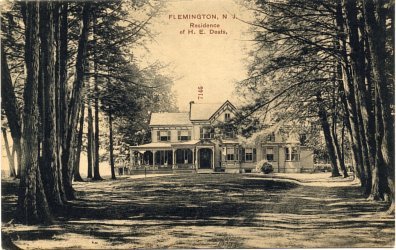 ut forty years ago (as one of the first stamp tasks I was involved in professionally), we consulted with the Philadelphia Library over their philatelic collection. Philadelphia had been the recipient of the Hiram Deats library which was donated to them in 1952. It still laid in cartons in the enormous main library basement when I examined it in 1971. The library consisted of nearly 1200 cartons and my
ut forty years ago (as one of the first stamp tasks I was involved in professionally), we consulted with the Philadelphia Library over their philatelic collection. Philadelphia had been the recipient of the Hiram Deats library which was donated to them in 1952. It still laid in cartons in the enormous main library basement when I examined it in 1971. The library consisted of nearly 1200 cartons and my - Posted May 03, 2018Read more »
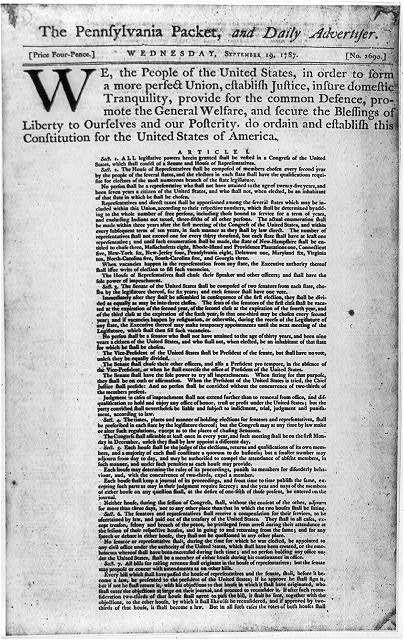 Collectors of United States stamps are accustomed to thinking that, when postal patrons of the Nineteenth Century wanted to mail newspapers, they used specially prepared Newspaper stamps. This was the case in the United States, a country that in the Nineteenth Century designed and issued more special service stamps than any other. Most other nations used regular postage stamps to mail newspapers, though the rate was often different than the regular first class postage rate. Most nations, the US included, have always subsidized newspaper mail, offering lower rates for the weights and distances sent. Postal services were government agencies then, and the thought was that aiding the distribution of newspapers facilitated intellectual life, though a more accurate reading might be that the ruling classes tended to like to get newspapers and periodicals and thus voted themselves a subsidy.
Collectors of United States stamps are accustomed to thinking that, when postal patrons of the Nineteenth Century wanted to mail newspapers, they used specially prepared Newspaper stamps. This was the case in the United States, a country that in the Nineteenth Century designed and issued more special service stamps than any other. Most other nations used regular postage stamps to mail newspapers, though the rate was often different than the regular first class postage rate. Most nations, the US included, have always subsidized newspaper mail, offering lower rates for the weights and distances sent. Postal services were government agencies then, and the thought was that aiding the distribution of newspapers facilitated intellectual life, though a more accurate reading might be that the ruling classes tended to like to get newspapers and periodicals and thus voted themselves a subsidy. - Posted May 01, 2018Read more »Classic French stamps are among the most interesting. The first issues of France are printed by a method of printing called typography. Unlike engraved plates, typography relies on plates that hold a design by having an ink-holding agent that is applied to the plate do the printing rather than having the metal plate itself hold the ink, as is the case in engraving. Typography is a simpler printing method than engraving, but in the hands of capable printers can produce a fine result. But the non-metal aspect of the printing agent means that wear is rapid, and for this reason typography tends not to be used for large printing orders as the quality of the print tends to degrade as the plates wear. The reason why the printers of the first French issues chose not to engrave their stamps is unclear. Perhaps they were unsure that stamps would catch on and that millions would soon be required, and their decision was based on the fact that typography is far cheaper than engraved. But



